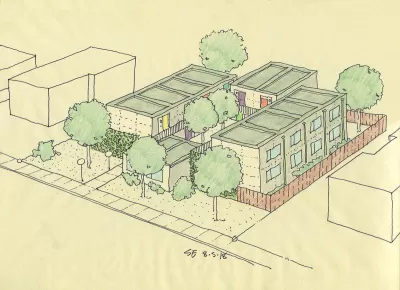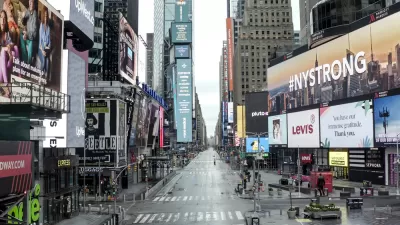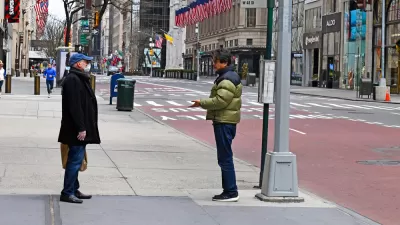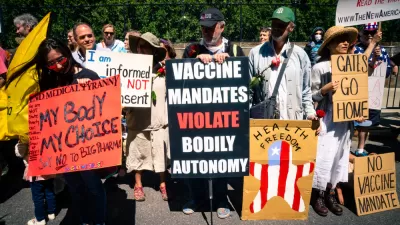Modular systems and flexible use of shared spaces are priorities as urban designers begin to consider how design requirements will change in the future.

Efforts to slow the spread of the coronavirus are prompting creative, life-saving design interventions. The past few months have seen the repurposing of buildings and even shipping containers as medical facilities and the retrofitting of hospitals to facilitate distancing. In the coming months and years, schools and offices will be redesigned to meet social distance protocols.
According to Starr Herr-Cardillo, "many of the pandemic’s most enduring influences over the built environment won’t be felt during the pandemic itself. They will evolve over the next several months and years." Architects, not typically considered to be first responders, are spearheading design interventions that will have a lasting impact on the built environment.
In Philadelphia, the Community Design Collaborative’s Design SWAT team, a design collaborative offering pro-bono design services to community organizations redesigned the local Sunday Breakfast Rescue Mission to include handwashing stations, repurposing the dining hall as a "functional multi-purpose room."
Architects predict that modular systems and flexible use of spaces will be key as retrofits and redesigns are prompted as a coronavirus response. Research is underway and it is possible that "careful evaluation across institutions might help identify those small, innocuous-but-critical design factors that made a difference."
FULL STORY: How designers are remaking spaces for our new socially distanced lives

Planetizen Federal Action Tracker
A weekly monitor of how Trump’s orders and actions are impacting planners and planning in America.

San Francisco's School District Spent $105M To Build Affordable Housing for Teachers — And That's Just the Beginning
SFUSD joins a growing list of school districts using their land holdings to address housing affordability challenges faced by their own employees.

The Tiny, Adorable $7,000 Car Turning Japan Onto EVs
The single seat Mibot charges from a regular plug as quickly as an iPad, and is about half the price of an average EV.

As Trump Phases Out FEMA, Is It Time to Flee the Floodplains?
With less federal funding available for disaster relief efforts, the need to relocate at-risk communities is more urgent than ever.

With Protected Lanes, 460% More People Commute by Bike
For those needing more ammo, more data proving what we already knew is here.

In More Metros Than You’d Think, Suburbs are Now More Expensive Than the City
If you're moving to the burbs to save on square footage, data shows you should think again.
Urban Design for Planners 1: Software Tools
This six-course series explores essential urban design concepts using open source software and equips planners with the tools they need to participate fully in the urban design process.
Planning for Universal Design
Learn the tools for implementing Universal Design in planning regulations.
Smith Gee Studio
City of Charlotte
City of Camden Redevelopment Agency
City of Astoria
Transportation Research & Education Center (TREC) at Portland State University
US High Speed Rail Association
City of Camden Redevelopment Agency
Municipality of Princeton (NJ)





























